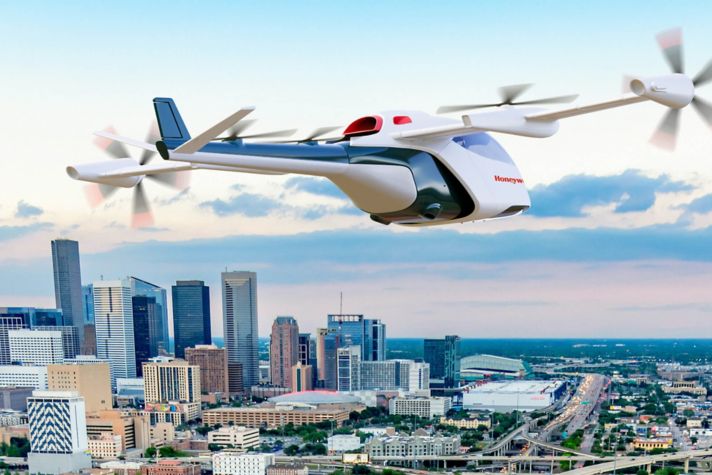-
 Global
Global-
Africa
-
Asia Pacific
-
Europe
-
Latin America
-
Middle East
-
North America
- |
- BUSINESSES
- |
- Contact
- |
-
 Global
Global-
Africa
-
Asia Pacific
-
Europe
-
Latin America
-
Middle East
-
North America
- |
- BUSINESSES
- |
- Contact
- |
You are browsing the product catalog for
You are viewing the overview and resources for
- News
- 3 Things to Know About the Future of Flying Taxis
3 Things to Know About the Future of Flying Taxis
Urban Air Mobility (UAM) vehicles are poised to make transportation more accessible and sustainable.
Electricity isn’t only powering some vehicles on the road. Soon, it could fuel the flying taxi you hail for your morning commute.
Technology is being developed today specifically for aircraft designed to do just that: transport humans over urban environments, typically without pilots. Known as Urban Air Mobility (UAM), this emerging aviation unit is focused on innovating within aerospace to bring to life on-demand, automated passenger transportation.
Here’s the latest progress being made:
1. A unique motor will power the first all-electric vertical take-off and landing (eVTOL) jet
A small, electric jet requires a small but mighty motor.
That’s why engineers in our aerospace business are partnering with leading mobility supplier DENSO to co-develop a zero-emissions electric motor (e-motor) for Lilium’s eVTOL jet (pictured above).
The e-motor, which weighs less than 10 pounds (approximately 4 kilograms) contains a single-stage rotor and stator that are designed to match the small size and low weight of the jet needed so it can take off, land and transport humans and goods.
2. The future of flight is electric
Innovations are in the works to make the aviation industry more sustainable – from technology enabling the conversion of renewable feedstocks into fuel for planes, to all-electric aircraft, like the Lilium Jet, which does not emit the harmful greenhouse gas carbon dioxide.
In addition to partnering on the development and installation of e-motors for the Lilium eVTOL jet, Honeywell will work with DENSO to create and manufacture electric propulsion systems for aircraft, with an emphasis on solutions tailored to UAM vehicles.
Read this article for a look at how our propulsion and power generation solutions can be used in electric and hybrid-electric aircraft.
3. Our engineers have developed solutions to take UAM to the next level
“We’re bringing technology to market that will enable a new, more efficient and sustainable way to move people and cargo that will revolutionize travel for decades to come,” said Taylor Alberstadt, senior director of business development for Honeywell Electric and Hybrid-Electric Propulsion. “This isn’t a ‘pipe dream,’ but rather already a work-in-progress.”
Engineers at Honeywell are specializing in creating aviation technologies tailored for the specific needs of UAM aircraft, including the fly-by-wire system, a control computer condensed into one system that’s about the size of a paperback book – tailored for the size and stability needs of UAM aircraft.
The Lilium Jet and Vertical Aerospace’s eVTOL aircraft, the VA-X4, will both use Honeywell Anthem, our cloud-connected avionics system that can fit any aircraft.
Other technologies like satellite solutions designed to fit UAM vehicles will enable aircraft to stay connected in the sky.
Lightweight radar can also be used to help UAM vehicles in the sky by detecting and avoiding traffic, obstacles and weather up to 3 kilometers away.
Learn more about the technologies powering the next era of transportation.
Copyright © 2025 Honeywell International Inc.




